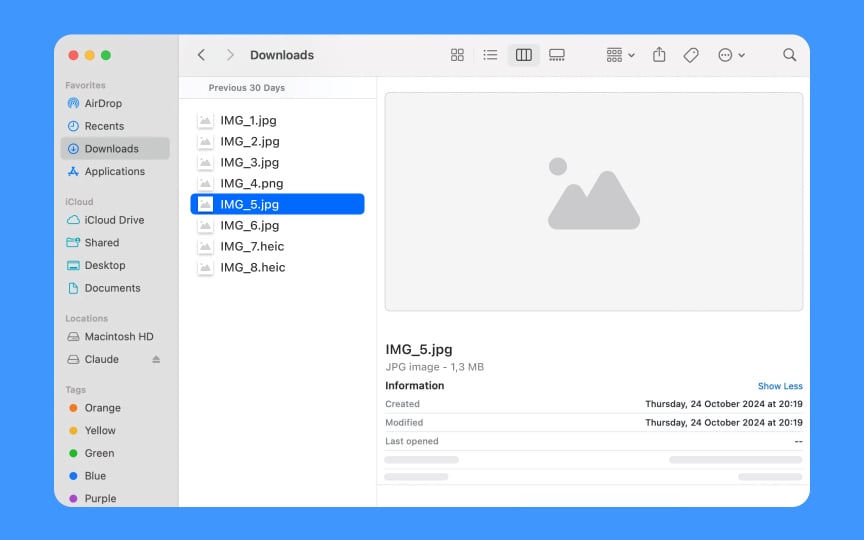Split view structure
Split views support navigation through information hierarchies by displaying multiple panes of related content. This pattern works best in regular (not compact) environments that provide sufficient horizontal space.
Split views organize information in connected panes
- The leading pane lists top-level items or collections
- The secondary pane shows the selected item contents
- The optional tertiary pane displays additional details, like inspectors or previews
On iPad, split views adapt to different contexts:
- In landscape, panes appear side by side
- In portrait, the app might hide the primary pane but keep it accessible through a button
- On iPhone, apps typically use standard navigation instead of split views[1]
For instance, the Finder app shown above illustrates this pane hierarchy: the leading pane presents top-level collections like Favorites and Locations, the secondary pane shows the contents of the selected Downloads folder, and the tertiary pane displays additional details with file information and preview.
References
- Split views | Apple Developer Documentation | Apple Developer Documentation

